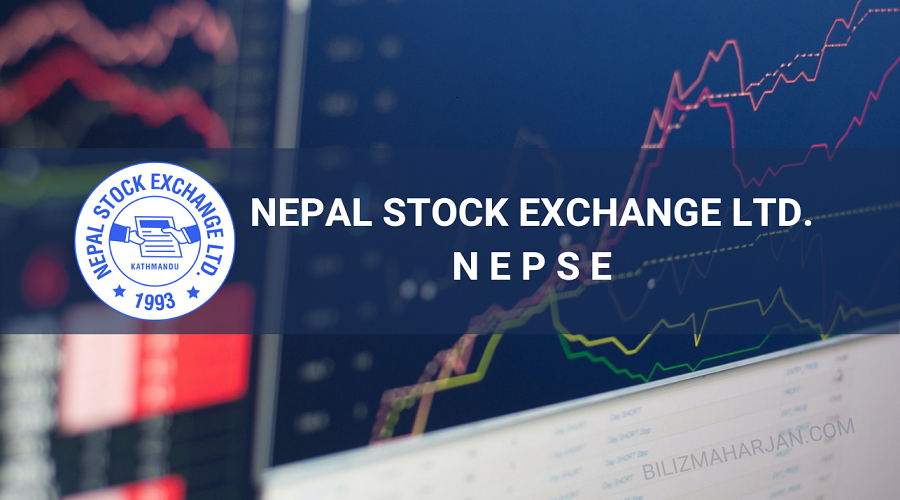KATHMANDU: The Nepal Stock Exchange (NEPSE) has been granted permission to conduct internal testing for its latest index called the ‘NEPSE 30 Index.’ During a meeting held on Wednesday, the NEPSE Board of Directors authorized the management to carry out the internal testing phase. Upon successful completion, NEPSE intends to implement the index officially.
The ‘NEPSE 30 Index’ is a novel addition to the existing suite of indices that includes NEPSE Index, Sensitive Index, Float Index, and Sensitive Float Index, presently in use.
This index is based on the free-float methodology, which incorporates shares that are readily available for public trading, accounting for at least 25 percent of issued shares.
NEPSE envisions the possibility of implementing various financial instruments based on this index in the future. Although the 30 constituent companies have been selected, their identities have yet to be disclosed by NEPSE.
The selection process for the companies included in the ‘NEPSE 30 Index’ involves several criteria. Only companies meeting these criteria will be considered for inclusion.
Key factors considered during the selection process encompass liquidity, share trading activity, accessibility to the public, stability of market prices, profitability, capital structure, returns, and other relevant aspects. Furthermore, NEPSE has mandated the inclusion of at least one company from each sector listed on the exchange.
The index maintains a minimum threshold of 25 percent free-float market capitalization for constituent companies, with the market capitalization of each individual company exceeding one percent.
NEPSE asserts that the inclusion in the ‘NEPSE 30 Index’ can be indicative of the top-performing listed companies. This development is expected to assist institutional investors in making informed choices by providing fundamental information about the selected companies.
However, it is crucial to note that inclusion in the index does not guarantee an increase in a company’s share price. Experts emphasize that the businesses of these companies will continue to function normally after the index’s implementation, without significant impact on their share prices.
Currently, the ‘NEPSE 30 Index’ serves as a representation of the turnover generated by the selected companies and is not yet tradable. However, with the appropriate regulatory framework in place, this index has the potential to be used as an investment instrument and traded in contracts (derivatives).
In addition to the ‘NEPSE 30 Index,’ other indices currently in use include the ‘NEPSE Index,’ which encompasses all listed companies, the ‘Sensitive Index,’ which represents companies in the ‘A’ category, and the ‘Lot Index,’ calculated based on tradable shares issued to the public.
The ‘Sensitive Lot Index’ is derived from the base price and current market price of tradable shares belonging to ‘A’ category companies. NEPSE previously introduced the calculation of the sensitive index in 2063 and later introduced the float and sensitive lot indices in 2065. Now, NEPSE has unveiled the latest addition, the ‘NEPSE 30 Index.’
The selection of companies for the ‘NEPSE 30 Index’ is based on specific criteria, which include:
– The company must have demonstrated profitability for at least three out of the last five financial years, including the previous year.
– Each group must have a minimum of one company and a maximum of 25 percent representation in the index.
– The company’s earning price per share should exceed the paid price per share, and it should have been profitable for at least three out of the last five financial years, including the most recent year.
– The earnings per share (EPS) in the previous financial year should be at least 10 percent or more of the paid price.
– At least 25 percent of the company’s shares must be issued to the general public, or the related company’s free- float market capitalization should account for more than one percent of the total free-float market capitalization.
– The company should have a minimum of 20,000 shareholders.
– Over the past six months, there should be an average daily trade value of at least 25 lakhs rupees, an average daily trade volume of 5,000 shares or more, and an average of 40 or more trades executed daily.
– Transactions should have taken place on at least 75 percent of the available trading days over the last six months.
The index calculation method involves the following steps:
Creation of a preliminary list of selected companies based on the aforementioned criteria.
Determination of the total weight of each listed organization in the initial list by considering factors such as free-float market capitalization, previous year’s earnings per share, transaction value, transaction volume, and transaction share.

